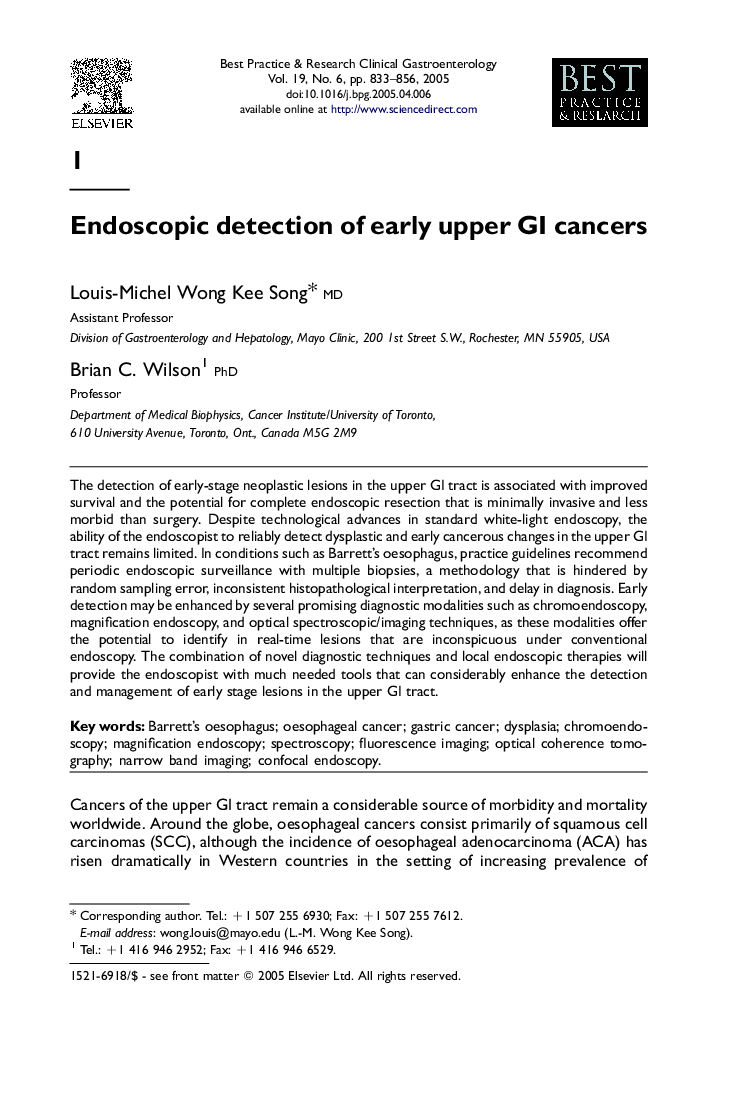| Article ID | Journal | Published Year | Pages | File Type |
|---|---|---|---|---|
| 9236112 | Best Practice & Research Clinical Gastroenterology | 2005 | 24 Pages |
Abstract
The detection of early-stage neoplastic lesions in the upper GI tract is associated with improved survival and the potential for complete endoscopic resection that is minimally invasive and less morbid than surgery. Despite technological advances in standard white-light endoscopy, the ability of the endoscopist to reliably detect dysplastic and early cancerous changes in the upper GI tract remains limited. In conditions such as Barrett's oesophagus, practice guidelines recommend periodic endoscopic surveillance with multiple biopsies, a methodology that is hindered by random sampling error, inconsistent histopathological interpretation, and delay in diagnosis. Early detection may be enhanced by several promising diagnostic modalities such as chromoendoscopy, magnification endoscopy, and optical spectroscopic/imaging techniques, as these modalities offer the potential to identify in real-time lesions that are inconspicuous under conventional endoscopy. The combination of novel diagnostic techniques and local endoscopic therapies will provide the endoscopist with much needed tools that can considerably enhance the detection and management of early stage lesions in the upper GI tract.
Keywords
Related Topics
Health Sciences
Medicine and Dentistry
Endocrinology, Diabetes and Metabolism
Authors
Louis-Michel (Assistant Professor), Brian C. (Professor),
